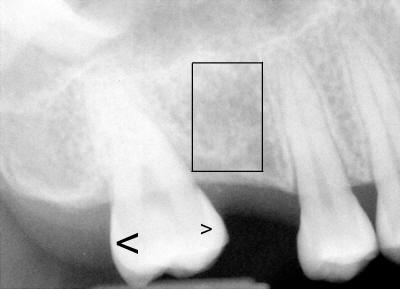
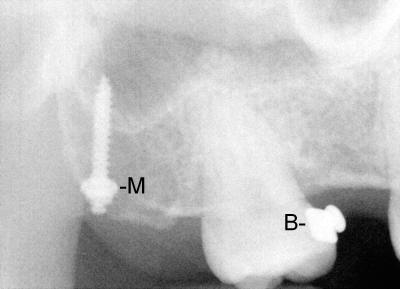
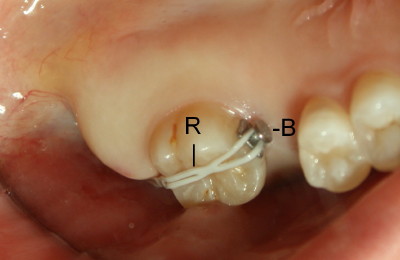
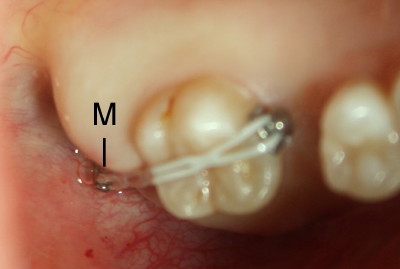
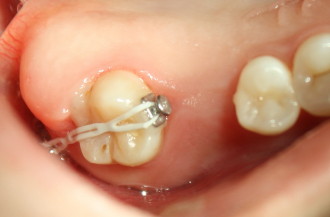
 |
 |
|
| Fig.1 | Fig.3 | Fig.5 |
 |
 |
 |
| Fig.2 | Fig.4 | Fig.6 |
Dental Education Lecture: Mini-implant as an Anchorage
Previously, we talk about that it is difficult to place an implant (black box in Fig.1) to restore a missing tooth for Ms. Wang, because the tooth in the back has moved forward (small arrowhead). It is reasonable to push the tooth backward (large arrowhead) before implant placement for the missing tooth.
How can we do it? Nowadays, we can use a so-called mini-implant as the best anchorage to drag the displaced tooth to where it belongs.
First, we place a button (B in Fig.2,3) in the front surface of the displaced tooth, second, place a mini-implant (M in Fig.3,4), and third, place a rubber band (R in Fig.2) between the button and mini-implant. Because the mini-implant is more fixed in the bone than the tooth, the tooth will slowly be pushed backward due to elasticity of the rubber band. It is expected to take 3 to 4 months to finish this project. In the meanwhile, the patient should keep mouth clean and return to the office for bite adjustment. As the tooth moves, the tooth may have abnormal contact with bottom teeth. To understand the bite relationship between top and bottom teeth, go to the article (Fig.1 and 3) related to this.
As expected, the displaced tooth moves to pretty normal position with the help of miniimplant in 3.5 months (Fig.5,6). We are planning to place a regular implant for the missing tooth soon.
Xin Wei, DDS, PhD, MS 1st edition 05/12/2010, last revision 09/28/2012